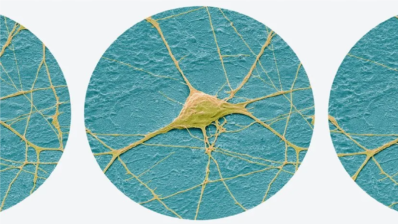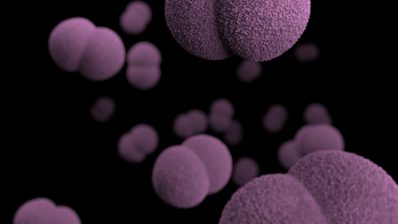The genomics service of the Department of Medicine and Life Sciences, Pompeu Fabra University (MELIS-UPF) has installed this summer an equipment to perform digital PCR, a technology that has existed for more than 5 years, but that has been on the rise in the last one or two years. The equipment has been loaned by Roche for a period of 6 to 12 months, with the possibility of continuity if there is sufficient interest.
It all started when Roger Anglada, a member of the unit, visited the Roche facilities in Sant Cugat. There he met Bea Bellosillo, a researcher at the Hospital del Mar Research Institute, who was already using digital PCR technology and wanted to learn more about Roche’s machine. “We decided to present a joint project to be able to have this machine here at the PRBB, as there was nothing similar”. And they succeeded.
Quantitative PCR vs. digital PCR
So what is a digital PCR? A PCR – made popular by the Covid tests – is a technology for amplifying DNA or RNA. In a quantitative PCR, you can see in real time how the copies are generated – and the exponential curve that marks the number of molecules, initially almost non-existent, becomes visible sooner or later depending on the initial sample amount. This is why with this type of PCR it is possible to infer the amount of material present in a sample.
“This is useful, for example, for gene expression studies, where you can amplify the RNA of a gene of interest and compare it with another gene whose expression levels are known,” explains Núria Bonet, head of the genomics unit. Or compare the expression levels of a gene before and after adding a drug to the sample, for example.
This quantification is, therefore, always relative to another sample, or at another time.
A quantitative PCR only infers the amount of original DNA or RNA in a sample, always relative to another sample. Digital PCR allows the exact number of molecules to be known.
In contrast, digital PCR (dPCR) allows absolute quantification, i.e. knowing the exact number of molecules you have in the sample. “You load your diluted sample on a surface with many wells (there are 28,000 and 100,000 plates). By chance, in some wells there will be no molecules at all and in others there will be only one. Once you do the dPCR, you see if each well has amplified or not, and by counting the number of wells where amplification has occurred, you can know the exact number of initial molecules”, Bonet explains. “To make an analogy, with quantitative PCR we could know if Barça’s stadium was fuller than Espanyol’s, while with digital PCR we can know that there are exactly 89,472 occupied seats out of 113,000. It has an incredible sensitivity,” adds Anglada. In fact, digital PCR can detect molecules present in as little as 0.02%. Moreover, you can put up to 12 plates in the machine at a time, and it can read up to six different fluorochromes at a time in each well,” concludes Bonet.
Possible applications
Digital PCR can have many applications. Bellosillo uses it, for example, to detect cancer molecules in blood samples – and to see the tumour burden before and after treatment. Similarly, it can be used to detect viral load in an infection. “Another example of application would be to detect somatic mutations, which occur in the adult individual and therefore are not present in all the cells of our body; with digital PCR you can quantify what percentage of cells have this mutation“, adds Bonet.
On 31 October at 11:30 am in the Ramón y Cajal room, Roche will present the machine, its operation and applications. “So far we have been testing, calibrating, learning the software… The preparation is the same as for quantitative PCR, but the plates and the analysis is different,” explains the head of the genomics service. “We invite everyone to come to the seminar on 31 October to see what can be done with this technology, and then we will offer specific training to those interested”.
On Tuesday 31 October at 11.30am, there will be a session open to all PRBB residents to present this device and its applications.
Like all the scientific-technical services of the Barcelona Biomedical Research Park (PRBB), this equipment is available to all residents of the Park, as well as to people from the scientific community outside the PRBB.







